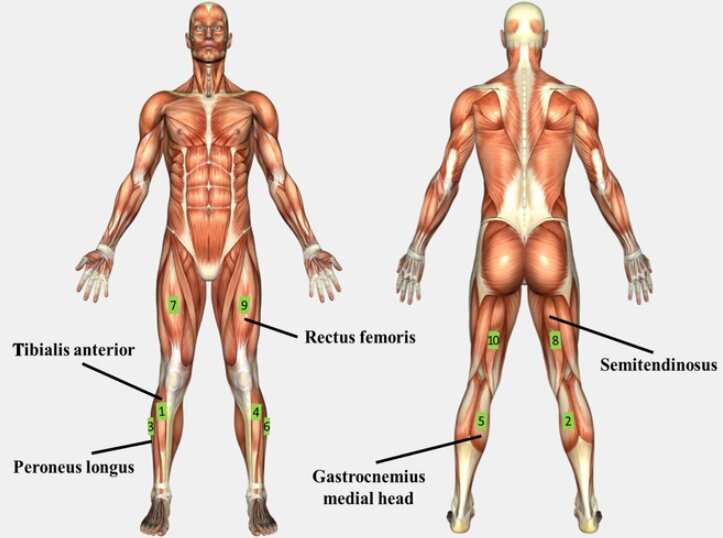Ground reaction force and moment estimation through EMG sensing using long short-term memory network

Imagine that by only attaching a number of electromyography (EMG) sensors to your legs, your motion in the future several seconds can be predicted. Such a way of predicting motion via muscle states is an alternative to the mainstream visual cue-based motion prediction, which heavily relies on multi-view cameras to construct time-series posture. However, there is still a gap between muscle states and future movements.
Muscles act upon the ground, which induces ground reaction force. Together with muscle states and ground reaction force, body movements are produced. Therefore, estimating the ground reaction force based on the recorded muscle states is essential, which still poses a great challenge because of the time-series-dependent and complex nonlinear mapping. A research team from Tohoku University addressed this challenge using a long short-term memory network. This research was published in the journal Cyborg and Bionic Systems.
Motion prediction is vital for the survival of both the hunter and the prey in the animal kingdom, and is still important in our daily life, for example, in sports. When playing basketball, as a defender, you may keep predicting whether the offender will break through your left or right side, so you can react appropriately in advance.
“Motions are generated originally by forces, it could be difficult to predict force-driven motion, for example, initial movement from a static pose, without dynamics sensing, or in this case, force-related measurement,” said Mitsuhiro Hayashibe, the corresponding author of this study, from the Neuro-Robotics Lab, Graduate School of Biomedical Engineering, Tohoku University. “Therefore, in addition to kinematics information, dynamics information would be beneficial for building better motion prediction systems, especially for actions from static poses.”
“Some human motions originate purely from muscle activations that are not associated with prior motions. In this circumstance, kinematic information including current and past position and pose provides limited information for motion prediction,” said Hayashibe.
For example, imagine when you are waiting for a traffic light. If the light turns green, you may suddenly start to walk. In this case, the fact that you hold a still pose for a long time can hardly predict a sudden forward walk. In fact, this information may lead to a wrong prediction, such as keep staying. Therefore, Hayashibe’s research team believes the dynamics of our muscles, especially the lower limb muscles, are necessary to be introduced to provide more information for decent motion prediction considering as many circumstances as possible.
They demonstrated the feasibility of predicting ground reaction force and moment through EMG sensing with two experiments. In the first experiment, the participants repeated the posture control motion, which consists of consecutive body swaying. In this experiment, past time-series postures provide important information for motion prediction. However, in the second experiment, the subjects were instructed to perform a stepping movement, which consists of standing followed by a sudden stepping. In this case, past kinematics provides little information on future movement states.
“Using a long short-term memory network, we can predict the future movement of subjects in both experiments. For comparison, the current kinematics-based algorithm can only achieve comparable results in the first experiment, but far inferior in the second experiment,” said the study authors.
“We believe that this method can also be beneficial for other related biomechanical research by obtaining a GRF estimate in a scenario where we cannot use the force plate,” said the study authors. In the future, they will focus on extending this proposed method to be integrated with motion performance, motion discrimination information, and time-scale considered motion synergy information for rehabilitation purposes.
More information:
Sei-ichi Sakamoto et al, Ground Reaction Force and Moment Estimation through EMG Sensing Using Long Short-Term Memory Network during Posture Coordination, Cyborg and Bionic Systems (2023). DOI: 10.34133/cbsystems.0016
Provided by
Beijing Institute of Technology Press Co., Ltd
Citation:
Ground reaction force and moment estimation through EMG sensing using long short-term memory network (2023, April 20)
retrieved 20 April 2023
from https://techxplore.com/news/2023-04-ground-reaction-moment-emg-short-term.html
This document is subject to copyright. Apart from any fair dealing for the purpose of private study or research, no
part may be reproduced without the written permission. The content is provided for information purposes only.
For all the latest Technology News Click Here
For the latest news and updates, follow us on Google News.
